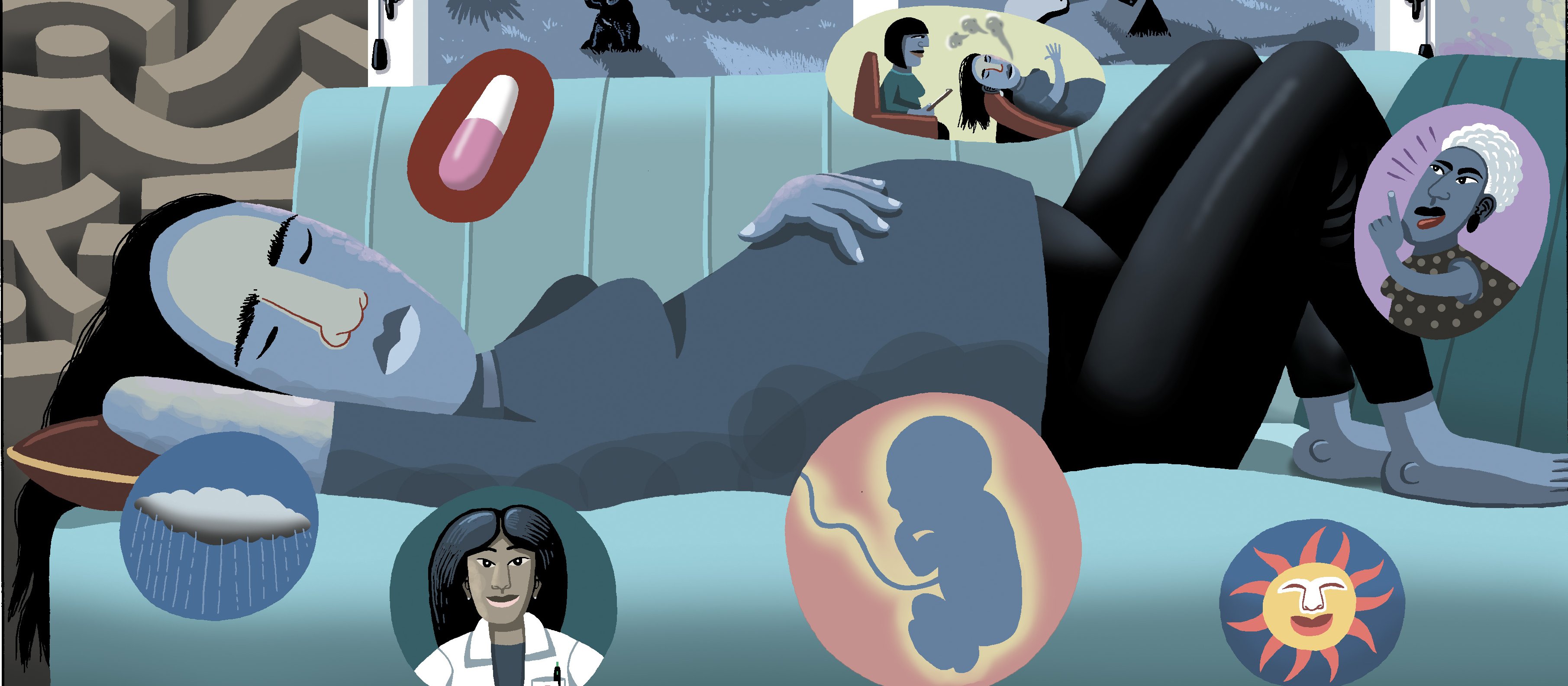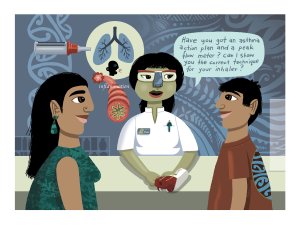Academic pharmacist Nataly Martini discusses the medical management of asthma in adults and adolescents, which has evolved to prioritise early anti-inflammatory treatment. She also explains how to improve patient outcomes by proactively identifying poor asthma control and supporting equitable access to education and treatment
CLASStime: Balancing emotions: Antidepressant use in pregnancy and breastfeeding
+Class
In print
CLASStime: Balancing emotions: Antidepressant use in pregnancy and breastfeeding
Wednesday 1 November 2023, 12:40 AM

[Image: Fraser Williamson]
Perinatal depression is common and carries considerable risks, yet patients often receive contradictory information regarding the safety of antidepressant use during pregnancy and breastfeeding. In this article, Lucy Broughton sets the record straight and explains how pharmacists can support this important treatment decision
Our suite of CLASS activities provides meaningful independent and peer group learning that you can put into action, while helping you complete your an
Kia ora and welcome to Pharmacy Today Kaitiaki Rongoā O Te Wā
Not a subscriber? Unlock this article by subscribing here.
References
- Waldie KE, Peterson ER, D’Souza S, et al. Depression symptoms during pregnancy: Evidence from Growing Up in New Zealand. J Affect Disord 2015;186:66–73.
- Jahan N, Went TR, Sultan W, et al. Untreated depression during pregnancy and its effect on pregnancy outcomes: A systematic review. Cureus 2021;13(8):e17251.
- Stewart AL, Payne JL. Perinatal depression: A review and an update. Psychiatr Clin North Am 2023;46(3):447–61.
- Perinatal and Maternal Mortality Review Committee. Te Pūrongo ā-Tau Tekau mā Toru o te Komiti Arotake Mate Pēpi, Mate Whaea Hokihe | Thirteenth Annual Report of the Perinatal and Maternal Mortality Review Committee. Wellington, NZ: Health Quality and Safety Commission; 2019.
- Svardal CA, Waldie K, Milne B, et al. Prevalence of antidepressant use and unmedicated depression in pregnant New Zealand women. Aust N Z J Psychiatry 2022;56(5):489–99.
- Broughton LC, Hughes-Medlicott N, Zeng J, Smith A. Perinatal psychotropic dispensing: A descriptive population-based study in New Zealand. Asia Pac Psychiatry 2023;15(2–3):e12539.
- Einarson A, Selby P, Koren G. Abrupt discontinuation of psychotropic drugs during pregnancy: fear of teratogenic risk and impact of counselling. Psychiatry Neurosci 2001;26(1):44–48.
- Cohen LS, Altshuler LL, Harlow BL, et al. Relapse of major depression during pregnancy in women who maintain or discontinue antidepressant treatment. JAMA 2006;295(5):499–507.
- Bayrampour H, Kapoor A, Bunka M, Ryan D. The risk of relapse of depression during pregnancy after discontinuation of antidepressants: A systematic review and meta-analysis. J Clin Psychiatry 2020;81(4):19r13134.
- Hardy LT, Reichenbacker OL. A practical guide to the use of psychotropic medications during pregnancy and lactation. Arch Psychiatr Nurs 2019;33(3):254–66.
- Mulder E, Davis A, Gawley L, et al. Negative impact of non-evidence-based information received by women taking antidepressants during pregnancy from health care providers and others. J Obstet Gynaecol Can 2012;34(1):66–71.
- Eakley R, Lyndon A. Antidepressant use during pregnancy: Knowledge, attitudes, and decision-making of patients and providers. J Midwifery Womens Health 2022;67(3):332–53.
- BPACnz. Diagnosing and managing perinatal depression in primary care. November 2019.
- Taylor DM, Barnes TRE, Young AH. The Maudsley Prescribing Guidelines in Psychiatry, 13th edition. Sussex, UK: Wiley-Blackwell; 2019.
- Einarson A. Influence of the media on women taking antidepressants during pregnancy. J Clin Psychiatry 2009;70(9):1313–14.
- Venkatesh KK, Riley L, Castro VM, et al. Association of antenatal depression symptoms and antidepressant treatment with preterm birth. Obstet Gynecol 2016;127(5):926–33.
- Malm H, Sourander A, Gissler M, et al. Pregnancy complications following prenatal exposure to SSRIs or maternal psychiatric disorders: Results from population-based national register data. Am J Psychiatry 2015;172(12):1224–32.
- Raffi ER, Nonacs R, Cohen LS. Safety of psychotropic medications during pregnancy. Clin Perinatol 2019;46(2):215–34.
- Desaunay P, Eude L-G, Dreyfus M, et al. Benefits and risks of antidepressant drugs during pregnancy: A systematic review of meta-analyses. Paediatr Drugs 2023;25(3):247–65.
- Grzeskowiak LE, Morrison JL, Henriksen TB, et al. Prenatal antidepressant exposure and child behavioural outcomes at 7 years of age: a study within the Danish National Birth Cohort. BJOG 2016;123(12):1919–28.
- Nulman I, Rovet J, Stewart DE, et al. Child development following exposure to tricyclic antidepressants or fluoxetine throughout fetal life: A prospective, controlled study. Am J Psychiatry 2002;159(11):1889–95.
- Medsafe. Small increased risk of postpartum haemorrhage with use of serotonergic antidepressants close to delivery. Prescriber Update 2021;42(2):23–24.
- Lassen D, Ennis ZN, Damkier P. First-trimester pregnancy exposure to venlafaxine or duloxetine and risk of major congenital malformations: A systematic review. Basic Clin Pharmacol Toxicol 2016;118(1):32–36.
- UK Teratology Information Service. Use of mirtazapine in pregnancy. September 2020.
- Drugs and Lactation Database (LactMed). Bethesda, MD: National Institute of Child Health and Human Development; 2006–.
- Briggs GG, Freeman RK, Tower CV, et al. Brigg's Drugs in Pregnancy and Lactation: A Reference Guide to Fetal and Neonatal Risk, 12th edition. Lippincott Williams & Wilkins, US; 2021.





